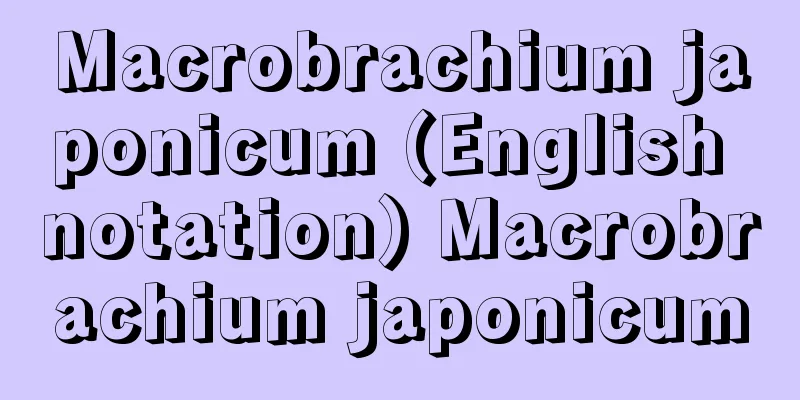Domon

|
A decorative technique in which pieces of embossed clay patterns are attached to the surface of Buddhist statues to create a relief-like pattern of plants, wheel jewels, etc. Examples are often found in works from the late Kamakura period to the Nanboku-cho period in the Kamakura region, and it is thought to be a technique unique to the region. Some works from the Song dynasty in China display techniques similar to this, and there is a theory that the technique originates there. Examples include the Amida Nyorai statue at Jokomyoji Temple in Kanagawa, created in 1299 (Shoan 1), and the Shokannon statue at Tokeiji Temple. [Soejima Hiromichi] Source: Heibonsha World Encyclopedia, 2nd Edition Information |
|
粘土を型押しした文様片を仏像の表面に貼り付けて,植物,輪宝などの文様を浮彫風にあらわす装飾技法。鎌倉時代後期から南北朝時代の鎌倉地方の作品にしばしば例があり,当地方に独特の技法と考えられる。中国宋代の作品に類似した技法を示すものがあり,そこに源流を求める説がある。1299年(正安1)作の神奈川浄光明寺阿弥陀如来像,東慶寺聖観音像などがその例である。【副島 弘道】
出典 株式会社平凡社世界大百科事典 第2版について 情報 |
Recommend
T-score (English)
…Therefore, the operational definition (definitio...
Tao River
A river in China's Gansu Province. It originat...
Hirokami [village] - Hirokami
A village in Kita-Uonuma District, southern Niigat...
Wrestling
A type of combat sport. In Japan, it is known as ...
Independence Hall
…It was developed mainly by Quakers, and in the c...
Asamukoiri - Asamukoiri
…Although the marriage form was essentially a bri...
Kamayarisou - Kamayarisou
...It is found in the warm regions of Honshu, Shi...
Radiation protection
The purpose of radiation protection is to protect ...
Theory of interest in money
...One is called the real interest theory, which ...
Lead nitrate - Shosan-nama (English spelling)
Nitrate of lead. It is obtained by dissolving lea...
Shiseido Co., Ltd.
Shiseido is the number one cosmetics manufacturer ...
Eskimo-type kinship names - Eskimo-type kinship names
...That is, (1) Hawaiian-style kinship nomenclatu...
Majima Seigan
?-1379 A monk and ophthalmologist from the Northe...
Gang Moa - Gang Moa
...The mowing width varies from about 20 cm for h...
Hoverfly (Hoverfly) - Hoverfly
A general term for insects belonging to the Dipter...



![Yokosuka [city] - Yokosuka](/upload/images/67cd18f23ef14.webp)
![Hieron [I] - Hieron](/upload/images/67cc98e4a4b79.webp)




